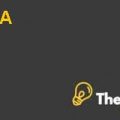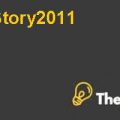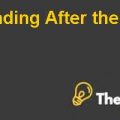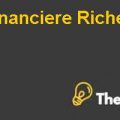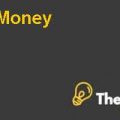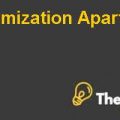
Question 1: The Launch of a New Wireless Content Technology
Phase I
1) Based on the survey results, recommend a percentage mark--‐up for the subscription pricing. Please show your work.
Solution
15% mark up rate is being suggested. It is because of change in price that is 75%. 500 hundred people were offered a product for $400 and another group of 500 people were offered for $275. 20% had intention to purchase while 30% of the 2nd groups were agreed to purchase that product. With a decrease of price, numbers of customers increased by 50%, who were ready to buy that product. Price decreased by $3 per person for 2nd group. Cost of device was 70%, which was assumed and subscription cost was 30%; which is also an assumption.
For the first 500 people, package price is $120 and cost is $100. Package price is $83 and cost is $69 for the second 500 people. Subscription price will decrease to $38. Change in subscription price is 75%. (See table-1 in the appendix)
2) What concerns, if any, do you have with this survey and its ability to provide meaningful information for the pricing of the subscription plan? Explain.
Solution
There are many concerns regarding that survey. Firm should have focused on demographic factor. They should have identified their population that was not motioned. Age group is not mentioned in that survey. They should have identified their occupation, which would help companies to find out the buying intentions of different income group.
Firm should have had clear objectives before conducting that survey. They should have merged phone with contract or subscription. They should have asked consumers what price they can pay. Firm should have asked open ended question about why they won’t buy their services.
Phase II
Make a price recommendation based on these estimates. Please explain any concerns or caveats you might have with your recommendation.
Solution
Own price elasticity of demand can defined as the percentage change in quality demand divided by percentage change in price. Standard error tells the variation into the data. Third party conducted the survey. Own price elasticity of demand is -0.75 and standard error is 1. It shows that with change in price by 53.33%, there will be 40% change in quality. It will have negative impact in product demand. (See table-2 in the appendix)
Phase III
1) A: Consider the current subscription plan offered by the firm and assume it is the only service offered: basic service on the LG Device with content from NBC, CBS, and ESPN. Plot the EVC demand curve for this subscription plan. Be sure to label your graph clearly.
Solution
LG is taken as the base service provider. We added up the values of NBC, ESPN, LG and CBS. Market segment 1 has 14.05%, market segment 2 has 41.43% and market segment 3 has 71.7% purchase intention (See Figure – 1).
B: Now suppose the firm also offers an alternative plan consisting of basic phone service on the LG device with content from NBC, CBS, ABC, ESPN and STARZ for $50 per month. Plot the new EVC demand curve for the plan offered in 1 (a).
Solution
LG is taken as the base service provider. We added up the values of NBC, ESPN, LG, Starz and CBS. Market segment 1 has 30.65%, market segment 2 has 52.4% and market segment 3 has 89.81% purchase intention (See Figure – 2)
2) Suppose the firm only offers the plan in 1(a). What is the revenue-maximizing, monopoly price of the subscription for a month of service?
Solution
In order to find the revenue-maximizing monopoly price, firm is required to evaluate every market segment. There are three bases to evaluate these market segments which are: demands of the customer, their purchase intention and their desires. If a firm does not do that discrimination, chances of product failure is high. That’s why it is necessary to have biased pricing policy for each market segment................................
This is just a sample partial case solution. Please place the order on the website to order your own originally done case solution.

